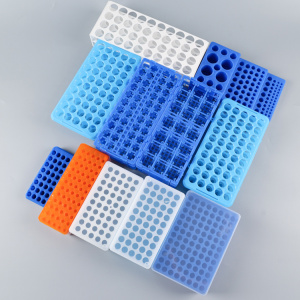The nucleic acid test results will be out in 4 minutes!
Now that the new crown pneumonia epidemic has not ended, nucleic acid testing has become commonplace in order to travel normally. At present, the nucleic acid detection of the new coronavirus mainly uses nasopharyngeal swabs, using fluorescence quantitative PCR, that is, polymerase chain reaction (PCR) technology, and the detection time is usually 2-24 hours.

The growing demand for travel and the continuing epidemic, which is not a short test time, put a lot of pressure on the nucleic acid test of the new coronavirus. Therefore, in the case of ensuring the accuracy of the results, it is necessary to make the detection more rapid.
Recently, the research team of Fudan University Liu Yunqi, Wei Dacheng and others published a research result in the journal "Nature Biomedical Engineering" (a sub-issue of "Nature" magazine, Nature Biomedical Engineering). The developed new crown detection equipment and method can obtain nucleic acid detection results within 5 minutes with higher accuracy.
In the current common polymerase chain reaction (PCR) detection method, it is necessary to reverse transcribe the nucleic acid (RNA) of the new coronavirus into DNA. Therefore, in the nucleic acid detection, if the virus concentration is too low, the accuracy of the detection result will be affected.

The article published by the research team of Fudan University mentioned that micro-electromechanical systems (MEMS) are highly integrated, small, cheap and efficient, and have the feasibility of commercialization. But MEMS, NEMS, and FET-based biosensors struggle to maintain sensitivity in some cases.
Therefore, the research team of Fudan University has developed a transistor sensing chip based on MolEMS (Molecular Electromechanical Systems). The MolEMS (Molecular Electromechanical System) they proposed is a micro-device that is self-assembled by DNA molecules and driven by an external electric field, and can precisely regulate the process of molecular recognition and signal conversion.

In practice, most biosensors cannot achieve ultra-high sensitivity in biological fluids. The unique structure of MolEMS enables ultra-precise bio-detection, enabling efficient bio-recognition and signal transduction, resulting in ultra-high sensitivity.
The findings also mention that the SARS-CoV-2 (novel coronavirus) RNA is approximately 30,000 nucleotides and that measuring clinical samples would have higher biological complexity, patient-to-patient variability, and sample collection and preparation procedures There is also uncertainty.
MolEMS detection of nucleic acid samples does not require complex and time-consuming nucleic acid extraction and amplification processes, and can directly detect SARS-CoV-2 RNA in nasopharyngeal swab samples. The time to diagnose COVID-19 is about 0.1-4 minutes, with an average of 60 seconds.
Researchers assembled a COVID-19 test system using MolEMS g-FETs for on-site and point-of-care testing. The test system consists of two parts, the MolEMS g-FET integrated test module and the main system. To avoid cross-interference between different samples, one module is used to test one sample.

The main system can be reused for multiple tests simply by replacing the MolEMS test module. The operation of the system is divided into three steps: the first step is to connect the test module with the main system, and connect the computer or smartphone to the test system via USB, Wifi or Bluetooth. The second step is to open the seal covering the PDMS well of the test module. The third step is to add the test sample to the PDMS well and read the results from a computer or smartphone.
In terms of research results, MolEMS reduces cost, volume and weight compared to MEMS and NEMS, and allows for molecular-level operations. Moreover, the operation is simple, the sensitivity and specificity are high, and it is portable. The probability of false negatives and false positives is extremely low, and it is faster than PCR testing.

Further development of the portable system enables on-site and point-of-care testing at airports, clinics and local emergency departments, and even at home. It helps to improve the efficiency of nucleic acid detection and slow down the spread of the virus.
Notably, MolEMS has also been developed to enable ultra-precise diagnosis of other diseases in minutes, without the need for target purification, expansion, or culture that typically takes hours or days. In addition to biosensing, the design principles of MolEMS can be used to design other electromechanical devices and functional systems with higher precision.



